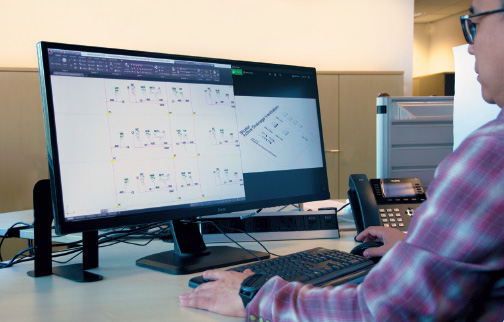To support our customers in the most comprehensive way, we have developed innovative solutions that save space, costs and installation time, while ensuring better system performance.
Each high-rise project is unique and requires customised design and engineering that goes far beyond any standard. Aliaxis offers full support in the design and engineering of systems, to ensure that the specifications of each building are considered and that the performance of the system aligns with your needs. You can trust Aliaxis to develop a premium-quality design, based on the best system, to deal with pressure transients and ensure water trap seals protection. We offer extensive expertise in designing piping systems for all types of tall, complex buildings, according to their specific requirements.
Problems associated with drainage in an existing building are largely due to negative pressures in a drainage system. Identifying ventilation issues can be done through several indicators: slow wastewater drainage, gurgling noises, foul odours, air bubbles in toilet water, trap seal depletion, etc. But once an issue has been identified, solving it can represent a major challenge, especially in a high-rise building.
Adding Air Admittance Valves (AAVs) will solve issues linked to negative pressures. But in many cases that won’t be enough.
Research from the School of the Built Environment at Heriot-Watt University (HWU) in Edinburgh, Scotland, revealed that the drainage systems used around the world all had a fundamental problem with the positive pressure resulting from the discharge of waste down a multi-storey stack. For instance, a blockage or belly in a piping system, creating positive pressure, is a failure of the system that will have to be fixed. AAVs, when of good quality, will handle the pressure and not open to prevent sewer gases from entering the building. This will act as an early warning sign of a drainage problem as the drainage will be slowed down and will enable the user to address the issue in a timely fashion. In addition, where there is overcapacity in a drainage system, there may be a requirement to install the P.A.P.A. (Positive Air Pressure Attenuator) system, which also resolves positive drainage pressures. For example, the peak usage of a building’s drainage system may be compromised when there is a change of use; the consequences being excessive gurgling and even exploding toilets.
The P.A.P.A. (Positive Air Pressure Attenuator) system was designed to deal with this. Rather than obstruct the flow at every floor, the discharge continues freely down the stack. The introduction of the P.A.P.A. (Positive Air Pressure Attenuator) in a drainage system can achieve a 90% reduction of positive air pressure transients. The P.A.P.A. (Positive Air Pressure Attenuator) can be retrofitted into an existing drainage system to solve positive pressure problems and prevent propagation of odorous sewer gases. For example, if a building was previously a residential high-rise building and is now operating as a busy hotel, it would be necessary to break down the individual elements of the drainage system and examine what combination of products would be required. This would not be a matter of changing the stack system, but simply installing a range of Studor products to cope with the greater load capacity (P.A.P.A. and AAVs).

